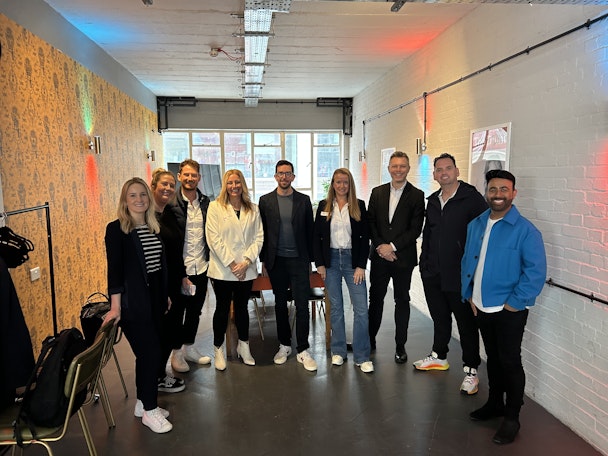A marketing renaissance: CMOs explore the need to balance creativity & technology
Marketing leaders from Sky, Ocado, Starling Bank, Microsoft, Google Cloud, Pentland Brands and PwC explore how to balance art and science to create a marketing renaissance for sustainable growth.

A Marketing Renaissance: the CMO as the Architect of Change
Marketing is essential for success in all economic conditions, but perhaps never more so than right now. In the face of digital disruption, changing consumer behaviors and expectations, as well as a cost of living crisis, organizations still need to grow. As the function that’s often most closely connected to the customer, marketing has a unique opportunity to be a driving force in the organization.
But there’s a tension that exists. PwC’s CMO study found 65% of CMOs believe marketing is still largely seen as a cost center, while a significantly larger proportion say it is expected to be a growth function at the same time. To tackle these challenges, many have turned to short-term performance marketing, but in doing so “we’re cutting ourselves off at the knee,” says Microsoft’s director of international marketing Ryan Miles, as growth is a strategy for building a brand over time.
He explains: “Performance is just farming with what you’ve got. As soon as you cut that down, it’s dead and there’s nothing more to have. We’re backed into hard deadlines and focus our resources there – but it’s the exact opposite of tons of research that says when times are tough don’t focus on now, focus on tomorrow. We all spout it, but none of us do it.”
Advertisement
A marketing renaissance: balancing left-brain logic and right-brain creativity
Within any business, there’s a need to balance left-brain logic and right-brain creativity. Sunny Bhurji, marketing director at Sky, says: “Marketers tend to go into the creative ‘paint by numbers’ side, but the organizations that truly embrace the logic and numbers of the insight side are going to win because it lets you know what your customers and prospects want. How you translate that into anything creative comes further down the funnel.”
Marketing’s role in growth is “taking it back to basics,” says Rob Wood, head of enterprise marketing at Google Cloud. “I describe it as the pointy end of the spear – the storytelling, creating awareness of an issue, a challenge, or an opportunity, then positioning your brand as a solution to tie it to a point of responsible growth. Then you bring in the art and the science and ask how we’re understanding the data and using creativity to reach the hearts of people.”
Finding the right combination of the ‘art’ (human traits and creativity) and the ‘science’ (technology to scale and drive improvements) is key to delivering engaging experiences and sustained value. In its recently published CMO Study, PwC found that those who achieve this balance are delivering year-on-year improvements in customer experience. Nine out of 10 CMOs also say they’re twice as likely to be performing better on revenue and three times as likely to perform better on brand.
Advertisement
Painting outside the lines: CMOs don’t need to be a ‘master of everything’
As the bridge between the business and the wants, needs and experiences of customers, CMOs are in a unique position to reinvent their function, to make a case for change to build up their position and to be the orchestrator of responsible growth.
Tom Adams, experience consulting and marketing transformation leader at PwC UK, says: “The instincts and experience of the marketer to be able to orchestrate all this complexity are more critical than ever. The instruments are changing but the orchestrator is still needed to play the symphony.”
To drive the organization forward, however, the CMO needs to hold the board accountable and challenge their assertion, assumptions and preconceptions. “It is our role to challenge and provoke the operating model, our markets and what we stand for,” says Simon Breckon, global lifestyle brand director at Pentland Brands, which is home to brands including Ellesse, Kickers, Berghaus, Mitre and Speedo. “But that’s the hard part – to drive internal buy-in, sell the dream and move the business.”
Marketing is variable, but it has always been the ‘connective tissue’ around the business. Marketing leaders must understand what’s happening everywhere, but they don’t need to be a master of everything. They need the right people with diverse skills who can fill the gaps.
“I’m much more on the creative side than the analytical side, but I make sure I’ve got the right people with diverse skillsets around me who can support and feed into my role to set the agenda and output,” says Sky’s Bhurji. “Creativity is pretty subjective and it’s those people who have blown me away because they just don’t ask the simple questions.”
Microsoft’s Miles adds: “Someone who can quickly pick up just 10-20% of everything that’s going on in the business and mash it into something that makes sense has a superpower.”
It’s down to the orchestrator to nurture their teams to be open to expanding their horizons. “There’s a feel for marketers coming into the business now that they want a bit of everything, they want to be part of your mission, but they want to be upskilled along the way,” says Rachel Kerrone, brand and marketing director at Starling Bank. “People will always have different kinds of specialisms, but bring people on board who are open to both sides and don’t want to be in their own little box.”
Suggested newsletters for you
From data-led to data-informed: art with ‘a bit more science upfront’
The difference with marketing now is that “the art comes with a bit more science upfront,” says Breckon, while Bhurji adds that “every modern marketer must be insight-driven – and that’s where the nuts-and-bolts technology comes in to help ‘traditional marketers’ make sense of all the data”.
Lisa McDowell, brand director at Ocado, meanwhile explains: “There’s a constant need to express the value of marketing spend and you need science-based measurement to enable you to justify that. It’s about maximizing the creative we are making, knowing it can be the biggest source of growth if you’re finding the right angles and the right things to say in new ways.”
Marketers mustn’t get too distracted by data, though. It should be used enough to inform but is not enough to base all decisions on. It’s down to the CMO to decide how much of that context and information to take on board or discard.
As our experts warn, don’t kill creativity with data points and don’t let science take away any subjectivity to continuously hone and learn. Data is incredibly pliable and can say almost anything in the hands of the right person, warns Miles. “If you become too data-led, you’re not doing anything that hasn’t been done before. You become static and that’s a one-way ticket to killing innovation. You must create the culture and space to get it wrong and be OK with it.”
Key takeaways: bringing together the art and the science under a shared ambition
1. Make it a business problem, not a marketing challenge: growth is a company-wide issue. Create a vision the business believes in – marketers are a driving force, but everyone needs to buy into it. You need the power of the collective to bring that vision to life.
2. Understand where you are and where you want to be: seeing where your organization is and the limitations on creativity – people or data – allows you to see where to rise to action. The funnel-to-flywheel approach changes everything you do, including the business model.
3. Prioritize and don’t be afraid to say ‘no’: as a focal point of many parts of the business, marketers are asked to fix a wide range of things. Be good at prioritization, know when to say ‘no’ and pivot towards those things that will make a real difference.
4. Don’t focus on tech for tech’s sake: automation and technology can only be good for marketing, but leaning too far towards technology will not deliver the results organizations need and can often be a costly mistake. Despite considerable tech advancements, don’t rush into tech for the sake of it. Sometimes, slow and steady wins the race.
5. Embrace a learning mindset: build your teams and establish a culture of experimentation that is hypothesis-led. Success is based on experimenting, innovating and trying, then proving, testing and learning. That could be a daily, monthly or even yearly cycle.
By successfully balancing creativity, ingenuity and strategic thinking with efficiency, productivity and insight, CMOs can create the necessary harmony between people and technology to deliver differentiated customer experiences. The opportunity for CMOs is clear: seize the moment, embrace disruption and transform marketing to demonstrate its strategic value to the business.
Watch the video above to recap on the key takeaways from the roundtable discussion, A Marketing Renaissance: the CMO as the Architect of Change.
Content created with:

PwC
At PwC, our purpose is to build trust in society and solve important problems. It is this focus which informs the services we provide and the decisions we make.
Demonstrating...

